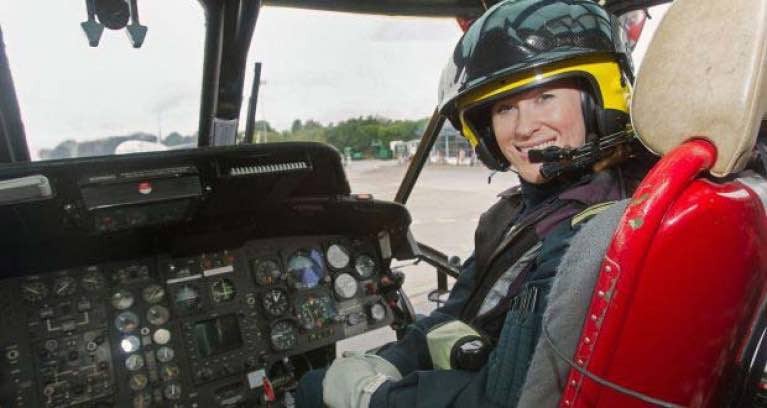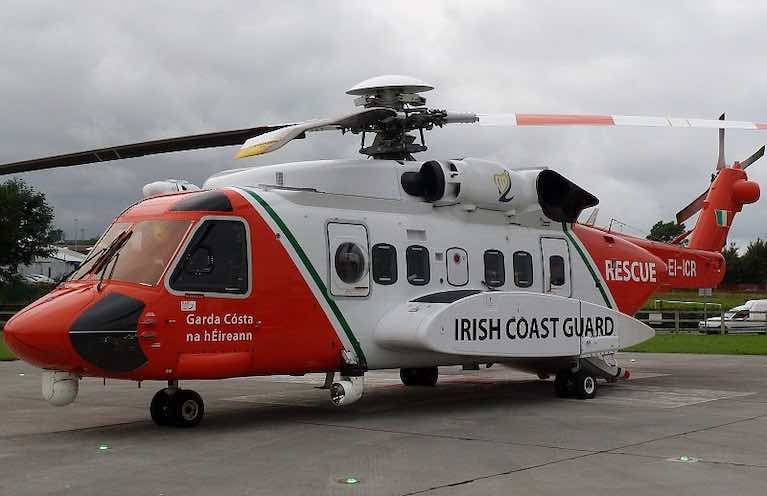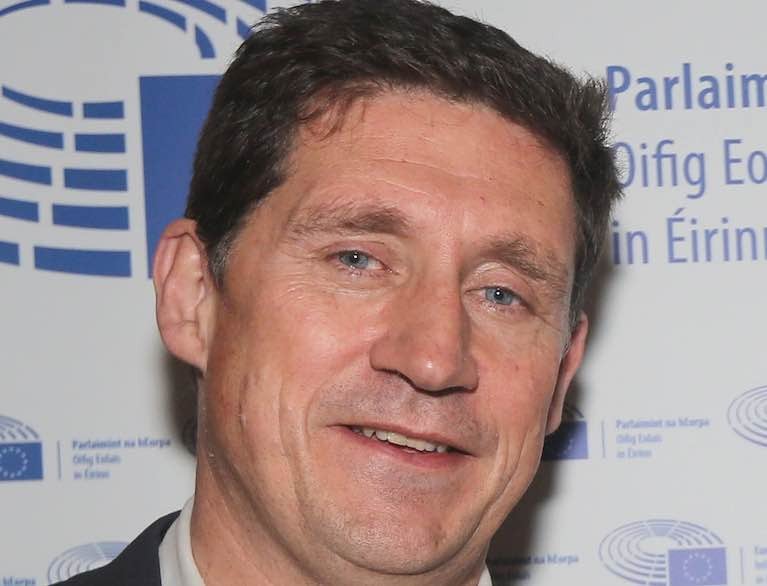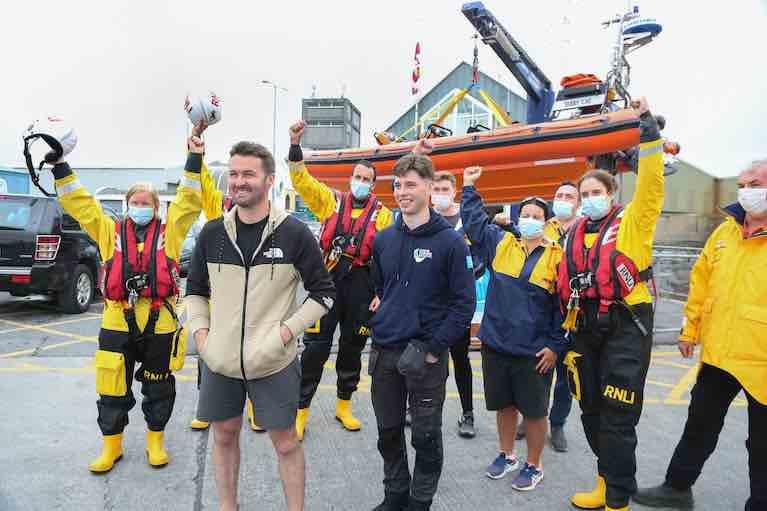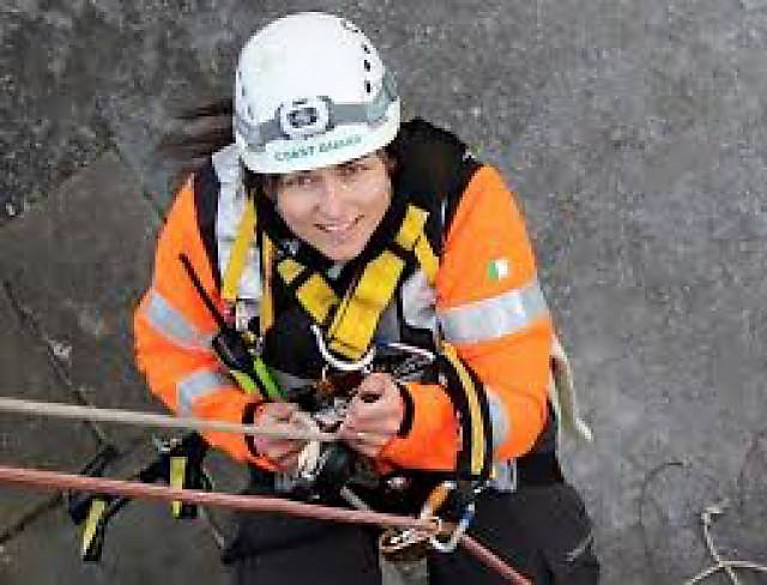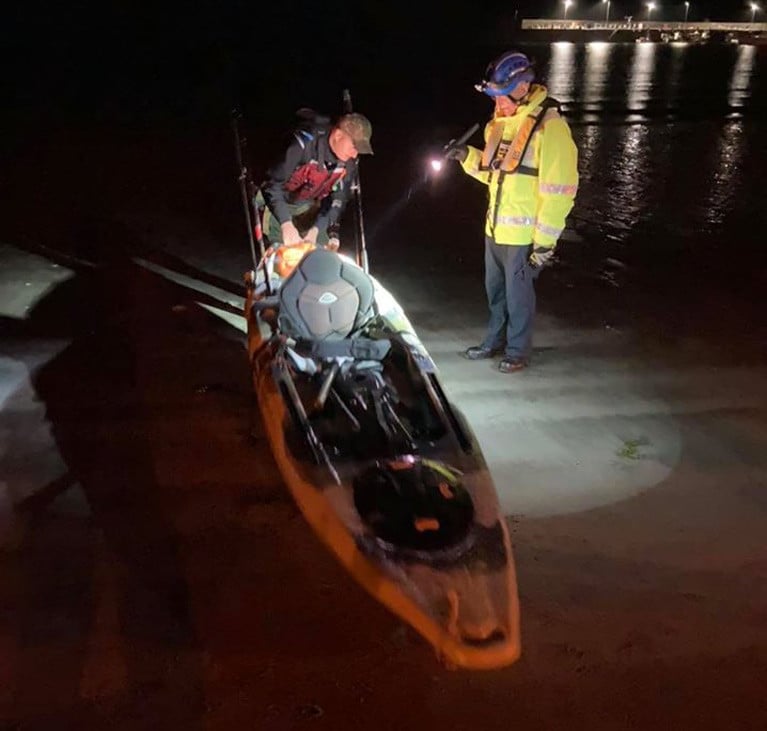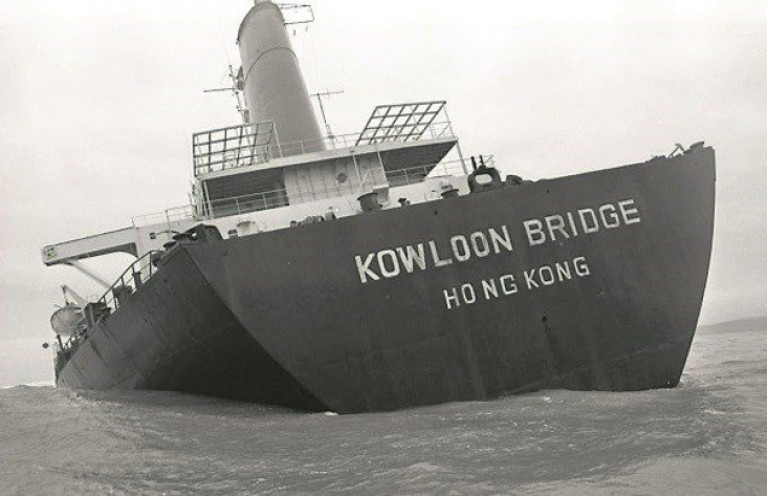Displaying items by tag: Coastguard
Minister for Transport Eamon Ryan has appointed a new review board into the Air Accident Investigation Unit’s (AAIU) final report on the Rescue 116 helicopter crash.
As The Irish Independent reports today, the review experienced a setback last month when the technical advisor Philip Hanson, an aviation expert with the British Maritime and Coastguard Agency, stood down over a potential conflict of interest.
However, Mr Ryan has established a new board to review aspects of the unpublished AAIU final report into the crash, which claimed the lives of Capt Dara Fitzpatrick, Capt Mark Duffy and winch team Paul Ormsby and Ciarán Smith off the north Mayo coast in March 2017.
The minister has opted to re-appoint senior counsel Patrick McCann as chairman and sole member of the review, following legal advice from the Attorney-General.
Mr McCann was chair of the previous review which was established by former transport minister Shane Ross earlier this year, and Mr Hanson was appointed as technical expert.
In a parliamentary response to Galway West Independent TD Catherine Connolly, the transport minister says the new timeframe for the re-examination of the final report is “ a matter for the chairperson to determine” as the board is “entirely independent in its work”.
Relatives of the four air crew are now waiting over three-and-a-half years for the final report into the Sikorsky S-92 collision, which occurred at Blackrock island, Co Mayo, while the helicopter was approaching Blacksod lighthouse to refuel.
The four Dublin-based crew were providing “top” cover” or support to a medical evacuation off the west coast by the Sligo-based Rescue 118 helicopter.
The bodies of the two winch crew have not been found in spite of extensive searches.
A draft of the final report was given last November to the families of the four crew and stakeholders including their employer, CHC Ireland, with a 60-day period for submissions or comments.
However, its publication had to be put on hold when Mr Ross acceded to a request for a “notice of re-examination” by an unidentified stakeholder.
Under Ireland’s Air Navigation (Notification and Investigation of Accidents, Serious Incidents and Incidents) Regulations 2009, a review can be applied for by an “interested party” in relation to “findings and conclusions that appear to reflect adversely on the person’s reputation”.
A Department of Transport spokeswoman said the minister was notified of Mr Hanson’s alleged conflict of interest on September 22nd. She said Mr Hanson did not receive any payment for his work on the review board over the past six months.
CHC Ireland has declined to say whether it sought the review. It was the first request of its type in the AAIU’s history of undertaking air crash investigations.
The AAIU had ruled out mechanical fault early on, and made recommendations in a preliminary report published a month after the helicopter crash, relating to anomalies in chart information software and a flaw in installation of locator beacons on crew life-jackets.
In its first interim report, the AAIU highlighted failures of oversight for search and rescue by the State.
It also recommended a review of safety management systems by CHC Ireland; and it identified a software issue with data recorded, which was not directly relevant to the cause of the crash.
It recommended a thorough review of search and rescue aviation operations in Ireland, which former minister Mr Ross commissioned.
Read more here
UK Coastguard Responded to 31,000 Incidents at the Coast - Annual Report
The UK Maritime and Coastguard Agency's (MCA) annual report for April 2019 – March 2020 has been published this week, highlighting the work of the Agency for the 12 month period.
Although the report doesn’t cover the period where the effects of COVID-19 were felt most, it’s clear that the MCA still had a number of challenges to deal with in terms of maritime.
Her Majesty’s Coastguard, the search and rescue service of the MCA responded to more than 31,000 incidents at the coast. The Aeronautical Rescue Coordination Centre – which responds to incidents where aviation support is needed - responded to 3,800 incidents during the annual report’s period of data collection; rescuing over 1,900 people in the process.
As well as frontline search and rescue, HM Coastguard has delivered a number of major projects including making the Channel Navigation Information Service national across its network. This means that, from now on, 24-hour radio and radar coastal vessel traffic data is available at all Coastguard Operations Centres – not just Dover – to help and support vessels navigate waters safely.
Away from HM Coastguard, the MCA’s Maritime Regulatory Compliance Team successfully prosecuted ten cases.
And the UK Maritime Services Team, incorporating the UK Ship Register, continues to move more of its work to digital platforms. The UK Ship Register is now able to process registration and vessel information online and had recorded 77 new ship registrations by the end of March.
The survey and inspection side of the Maritime Services Team has completed its Transformation Programme giving surveyors and customers more flexibility of working. In addition to that, a successful surveyors’ recruitment drive saw the MCA place a minimum of 85 qualified Port State Control Officers in positions by 31st March of this year – meeting its target.
Seafarer training and certification faced a number of challenges at the beginning of the COVID-19 pandemic but the team worked to find solutions including offering extensions and training online.
The MCA continues to work hard to provide a good workplace and continues to drive equality in its workforce. In the annual report, it shows there has been an increase of just over 15 per cent in the number of female staff holding senior roles within the organisation.
Brian Johnson, Chief Executive of the MCA, said: “I’m proud of all those who work and serve with and for the Maritime and Coastguard Agency. They continue to carry through the commitment to driving forward maritime safety in all aspects of our work
“As this report demonstrates, we – as an agency – continue to keep protecting the general public with our first-class search and rescue service. Elsewhere, exciting work has and is continuing to take place across the board, with important steps being made in many areas, such as Survey and Inspection and enhanced experiences for UK Ship Register customers.
“The final month of this year’s report was affected by Covid-19, in which the Agency had to react and adapt quickly to new challenges. We did so effectively, working closely with and supporting our emergency service partners and local resilience forums, whilst maintaining full capability to operate. This work also extended to supporting the shipping industry during a difficult period and doing our bit to make sure that important services have been able to resume as close to normal as possible in most cases.”
Link to the report is here
Coastguard & Lifeboats Assisting Drifting Cargo Vessel off Waterford
In a major mobilisation of rescue services off the south-east coast this evening, the Irish Coast Guard is coordinating assistance being provided to a cargo vessel that has lost power off the Waterford Harbour.
The Coast Guard said in a statement this evening, The ship, which is carrying a cargo of coal reported to MRCC Dublin earlier this afternoon that it had lost power.
RNLI Lifeboats from Dunmore East, Kilmore Quay and Rosslare, as well as the Waterford based Coast Guard Helicopter and Fethard Coast Guard unit, were immediately tasked. A Waterford based tug is expected on scene shortly after 6 pm.
 The track of the 99-metre ship which was on its way to New Ross from Germany when it lost power off the Waterford coast.
The track of the 99-metre ship which was on its way to New Ross from Germany when it lost power off the Waterford coast.
The Coast Guard has described the situation as stable and the vessel with Lifeboat assistance is drifting in an Easterly direction pending arrival of the Tug.
More news on this as it becomes available
Fixed Wing & Drones May be Part of New Air/Sea Search & Rescue Contract But no Apparent Role for Air Corps
The Irish Coast Guard has asked the Government to include fixed-wing aircraft and use of drones in the new State contract for search and rescue.
As The Sunday Times reports today, tender offers for the new air/sea service, which will replace the existing €60 million a year contract, may be asked to suggest how a mixture of helicopters, fixed-wing and drones could be used – without necessarily being tied to four helicopter bases.
CHC Ireland, which operates a fleet of Sikorsky S-92 helicopters from bases at Shannon, Sligo, Dublin and Waterford for the Irish Coast Guard at a cost of €60 million annually, has been given a one-year extension to its ten-year contract to 2023.
A recent industry briefing in advance of the publication of a tender for the new service from 2024 specified that bidders should be able to deploy a helicopter to anywhere in Ireland or within 12 nautical miles of the coast in 45 minutes of being airborne and be capable of search and rescue in the Irish exclusive economic zone.
It also specified providing one Coast Guard search and surveillance aircraft - which could be fixed wing or drones - on 24-hour standby.
This would reduce the flying time and fuel expenditure of search and rescue helicopters
Questions are being asked within military circles about the need – and possible extra expense of – a dedicated fixed-wing aircraft under the control of the Irish Coast Guard, which could push the contract price up considerably.
The Air Corps is due to take delivery of two new Casa maritime patrol aircraft at a cost of €235 million.
Earlier this month, however, Minister for Foreign Affairs and Defence Simon Coveney ruled out a role for the Air Corps in search and rescue.
The Air Corps pioneered helicopter rescue off this coast 40 years ago, with long-range missions undertaken by the British RAF and Royal Navy, but it was withdrawn from search and rescue in 2003 by then defence minister Michael Smith.
The Air Corps currently flies the emergency aeromedical service (EAS), based in Athlone, Co Westmeath, which recently marked a milestone by airlifting its 3000th patient.
The Irish Coast Guard flew 54 medical missions this year, with an additional two paediatric transfers to Britain. It also serves the islands and flew 91 medical evacuations from offshore communities.
Read more in The Sunday Times here
Budget 2021: €108m Allocation for Maritime Transport & Safety
A €108m allocation from the Department of Transport will support the work of the Irish Coast Guard it was announced in today's 2021 Budget.
The funding will also provide for the services of the Maritime Safety Policy Division, the Marine Survey Office, the Mercantile Marine Office, the Marine Radio Affairs Unit and the Department’s contribution towards the net cost of the Commissioners of Irish Lights operations all of which are responsible for ensuring the productive and safe use of Ireland’s seas.
In addition, funding is provided to the Marine Casualty Investigation Board (MCIB) to allow it to carry out its functions to examine and if necessary carry out investigations into all types of marine casualties to, or onboard, Irish registered vessels worldwide and other vessels in Irish territorial waters and inland waterways.
Time to Take Maritime Matters Seriously
"The Killala Coast Guard Unit is operational and available in the event of a call-out, but is 'off-the-board' for boat search-and-rescue."
That statement was made by the Minister for Transport, Eamon Ryan, whose Department is responsible for the Coast Guard, in answer to a Parliamentary Question by former Marine Minister, Mayo TD Dara Calleary.
Coastguard resignations
It means that the Unit cannot engage in search-and-rescue on the water, but can undertake training. It has been reduced in volunteer numbers because of personnel problems. The Unit was involved ashore but not afloat in the recent when kayakers got into difficulties near Enniscrone, within the Unit's operational area. Two were rescued by the Coast Guard helicopter from Sligo. One made his own way ashore.
The involvement of an independent company in an attempt to resolve the issues has not been successful. There have been other dismissals and resignations in Coast Guard Units around the coast because of personnel issues.
This is one of a number of several marine sector issues at present.
Fishing industry fighting penalty points
The fishing industry is fighting the reintroduction of penalty points by the Taoiseach and the Marine Minister, though both politicians opposed the system and led to its defeat in the Dáil previously. It was also defeated in a legal challenge by the industry in the Supreme Court.
 Padraig MacLochlainn, Sinn Fein Spokesman on the Marine
Padraig MacLochlainn, Sinn Fein Spokesman on the Marine
Sinn Fein has claimed that the reintroduction is because Marine Department officials are deciding policy, not the Government and has called for a "root-and-branch" review of the Department: Padraig MacLochlainn, Sinn Fein Spokesman on the Marine says that "the potential of the seas around this island nation is not being fully recognised by the Department which is not engaged in development."
 Teresa Morrissey, Aquaculture Executive of the IFA
Teresa Morrissey, Aquaculture Executive of the IFA
The powerful Irish Farmers' Association has joined in on behalf of aquaculture farmers who it represents. Teresa Morrissey, Aquaculture Executive said there is "a failure at Government level to realise the importance of the aquaculture sector as a food source and as an economic asset of the nation. There is a big contrast by what they say when they talk about its potential and what they actually do."
Covid restrictions on sailing
Fortunately, Irish Sailing has managed to chart a path through the difficulty of pandemic restrictions to keep the sport going, though the impact of the latest in Dublin has cleared the Bay of competitive sailing at present. In Cork, there are worries about the possibility of more restrictions.
In Cork, there are worries about the possibility of more restrictions and how they might affect the rest of the sailing season.
Listen to the Podcast below
Galway Paddleboarders Pay Tribute to Enormous Rescue Effort - Former SAR Pilot Raises Questions About Search
Galway student Sara Feeney (23) has said she is “overwhelmed” with gratitude for the hundreds of people who searched overnight when she and her cousin Ellen Glynn (17) were swept out to the mouth of Galway Bay on paddleboards last week.
In a Sunday Times interview, Ms Feeney also pays tribute to her cousin, who was due to be released from University Hospital Galway this weekend.
“We didn’t even verbalise what might happen, or what we might both be thinking,” Ms Feeney, who was able to return home on the night of her rescue, says.
“I think if we had panicked at all, things could have been very different. I know if Ellen had panicked, I would have found it very difficult,” she says.
Ellen Glynn, who has also paid tribute to the rescue agencies, volunteers and Claddagh mariners Patrick Oliver and his son Morgan who found them tethered to crab pot floats, says that the sight of meteor showers and phosphorescence on the sea sustained them during the night.
They also sighted a small pod of dolphins off the Aran island of Inis Oírr the following morning.
Former Irish Coast Guard search and rescue pilot Dave Courtney, author of the memoir Nine Lives, says that questions need to be asked as to why the rescue took so long.
"sea-faring gut instinct"
“The whole country rejoiced when the two women were found alive after 15 hours at sea.,” Courtney said, paying tribute to the enormous rescue effort.
“ But tide and search probability computer technology, and three of the country’s four rescue helicopters - the most modern and best equipped in the world, armed with heat-seeking cameras - were no match for the sea-faring gut instinct of Patrick Oliver and his son Morgan,” he said.
The Olivers had noted the wind and “headed like a bloodhound straight to the survivors’ location”, Courtney said.
“The ocean is a cruel place....there was no loss of life in this incident, but that doesn’t mean there aren’t lessons to be learned,” he said.
“ The term ‘looking for a needle in a haystack’ is valid except that the FLIR / Forward-Looking Infra-Red camera on the Coast Guard helicopter can see the heat of human life relatively easily in sultry summer weather,” he said.
“Was it used effectively during the search? Were search assets duplicating each other’s efforts, instead of extending the search area as time and tidal drift and wind effect would have necessitated?” Courtney asked.
Irish Coast Guard
The Irish Coast Guard has said the search for the two women covered a 200 square mile sea area, and said it was using SAR MAP - the US software used effectively by Valentia Coast Guard in 2011 to track the probable location of the crew of the yacht Rambler which capsized in the Fastnet yacht race off West Cork.
The SAR MAP search area generated two scenarios which were used to co-ordinate all assets, including fishing vessels and commercial craft, it says.
It is understood that the helicopters and lifeboats were receiving frequent reports of “targets of interest”, which they had to divert to.
The Irish Coast Guard says that if the two women were not falling under the focused spectrum of the Sikorsky S-92 night sun or FLIR camera they would be “difficult to spot”, particularly as they had no wetsuits to provide an extra heat source.
“ The search was just moving into the south-west of the Inis Oirr sector ...with both aviation and surface assets when the fishing vessel Johnny Ó came upon them. It is highly likely they would have been detected within the following one to two hours as it was daylight,” it says.
More on The Sunday Times here
DPP Rules Out Criminal Charges in Death of Irish Coast Guard Volunteer Caitriona Lucas
The director of public prosecutions (DPP) has decided that no criminal charges should be brought in relation to the death of Irish Coast Guard volunteer Caitríona Lucas almost four years ago.
As The Sunday Times reports today, her death, the first of an Irish Coast Guard volunteer on duty, prompted two state investigations into the incident off Kilkee on September 12, 2016. A Health and Safety Authority (HSA) inquiry was forwarded to the DPP.
A separate Marine Casualty Investigation Board (MCIB) report, published two years after the incident, was critical of the Irish Coast Guard’s safety management system, and outlined a number of systems and equipment failures in relation to the Kilkee unit.
The DPP recently informed Bernard Lucas, her husband, that no criminal charges would be brought arising from the HSA inquiry.
Gardai have also confirmed that the DPP has directed no criminal prosecutions will arise from their investigation into the Irish Coast Guard Rescue 116 helicopter crash. Two pilots, Dara Fitzpatrick and Mark Duffy, and winch crew Paul Ormsby and Ciarán Smith died in the crash off the north Mayo coast in March 2017. An HSA inquiry is still ongoing.
Read The Sunday Times here
Call Outs for Bangor Coastguard & Lifeboat
Last Thursday and Friday were busy days for Bangor Coastguard on Belfast Lough with an incident on both days.
On Thursday evening the Coastguard and the Police Service investigated reports of concern for a kayaker seen the Ballywalter area in failing light. Ballywalter is a small village on the east coast of Co Down with a long award-winning sandy beach and a small harbour which partially dries out.
By the time the team arrived, it was already dark, and together with their Police colleagues, a plan was put in place. Coastguards searched the beach area while the Police spoke with the first informant and checked the area around the Harbour. The Police Helicopter was also requested but unable to attend, so the Police fixed-wing aircraft was asked to assist.
As one of the team was completing their search, they saw a kayaker round the Harbour wall. After a quick conversation, it was established that this was the person they had been looking for and he was given safety advice and both Police and Coastguards stood down.
The next day (Friday) the team was tasked along with Bangor Lifeboat to a yacht with engine problems between Bangor and Groomsport. They kept visual on the vessel while the Lifeboat set up a tow and headed for Bangor where the vessel and the lifeboat were met in the harbour by Coastguard personnel.
Ireland Gets Maritime Oil Pollution Plan - Almost 34 Years After Kowloon Bridge Sinking
Irish Coast Guard deputy director Gerard O’Flynn has hailed as a “milestone” the publication of the State’s framework for handling major maritime pollution incidents.
The plan released by the outgoing government last Friday (June 26) fulfils long-awaited commitments made after the grounding of the Kowloon Bridge off the west Cork coast almost 34 years ago.
Devastating damage was caused to wildlife and the south-west coast’s marine environment when the 900 ft super bulk carrier with a cargo of iron ore ran aground in a gale on November 22nd,1986, broke into three pieces and sank off Toe Head.
At that stage the 27 crew had already been airlifted off the ship, having reported damage to its steering gear.
There was no public inquiry, and Cork County Council had to bear the full clean up of the cost of 0.5 million
The Sea Pollution Act 1991 makes provision for the prevention of pollution of the sea by oil and other substances, but Ireland is obliged to have a national contingency plan as a signatory to the International Convention on Oil Pollution Preparedness, Response and Co-operative Convention.
Mr O’Flynn said the new plan is a “very important milestone”, which “sets out a framework for interactions between stakeholders” in a major pollution incident.
These stakeholders range from the Government’s transport department to the Irish Coast Guard – responsible for both search and rescue and pollution response – and shipping companies, he said.
“We have a national search and rescue plan, and this new pollution contingency plan is another landmark,” he said.
The new national search and rescue plan was published by former transport minister Shane Ross in July 2019.
He was acting on recommendations in a number of reports – including the Air Accident Investigation Unit’s interim statement on the Rescue 116 helicopter crash of March 2017 which claimed the lives of Irish Coast Guard aircrew Dara Fitzpatrick, Mark Duffy, Paul Ormsby and Ciarán Smith, and the Marine Casualty Investigation Board’s report into the death of Irish Coast Guard Doolin volunteer Caitriona Lucas off the Clare coast in September 2016.
The maritime oil and hazardous and noxious substances (HNS) plan sets out a framework for pollution originating from ships, harbours, offshore units or oil/HNS handling facilities and land-based sources.
It covers waters in the Irish Exclusive Economic Zone (EEZ) and addresses Ireland’s obligations under international convention.
It also provides for requesting assistance from other countries through bilateral and multi-lateral arrangements.


























